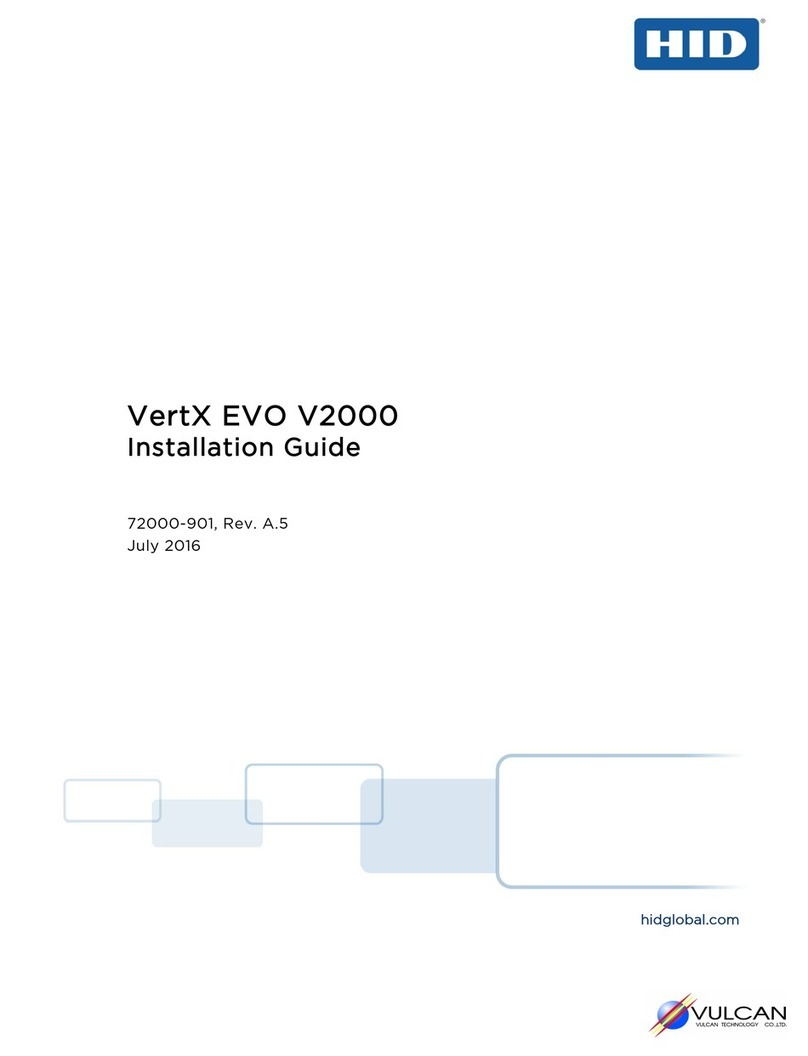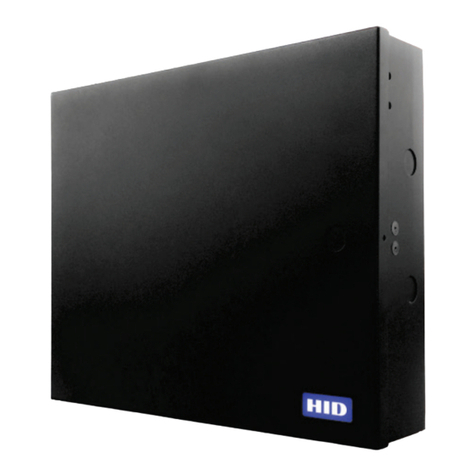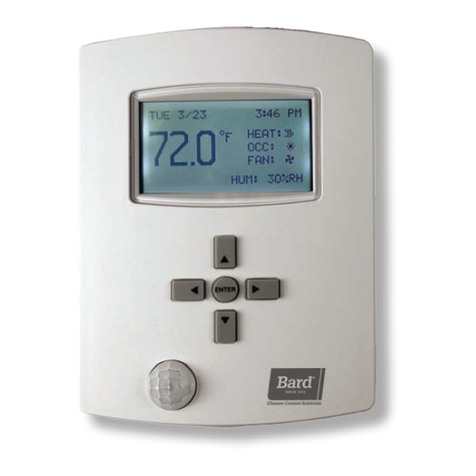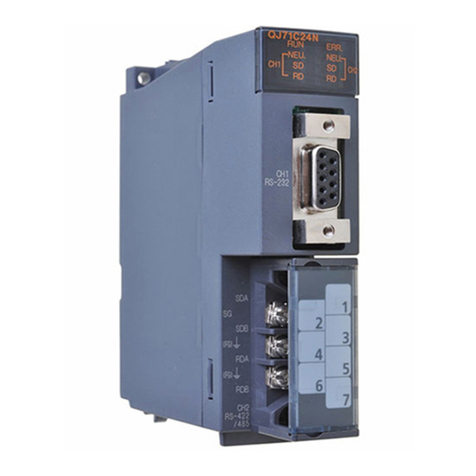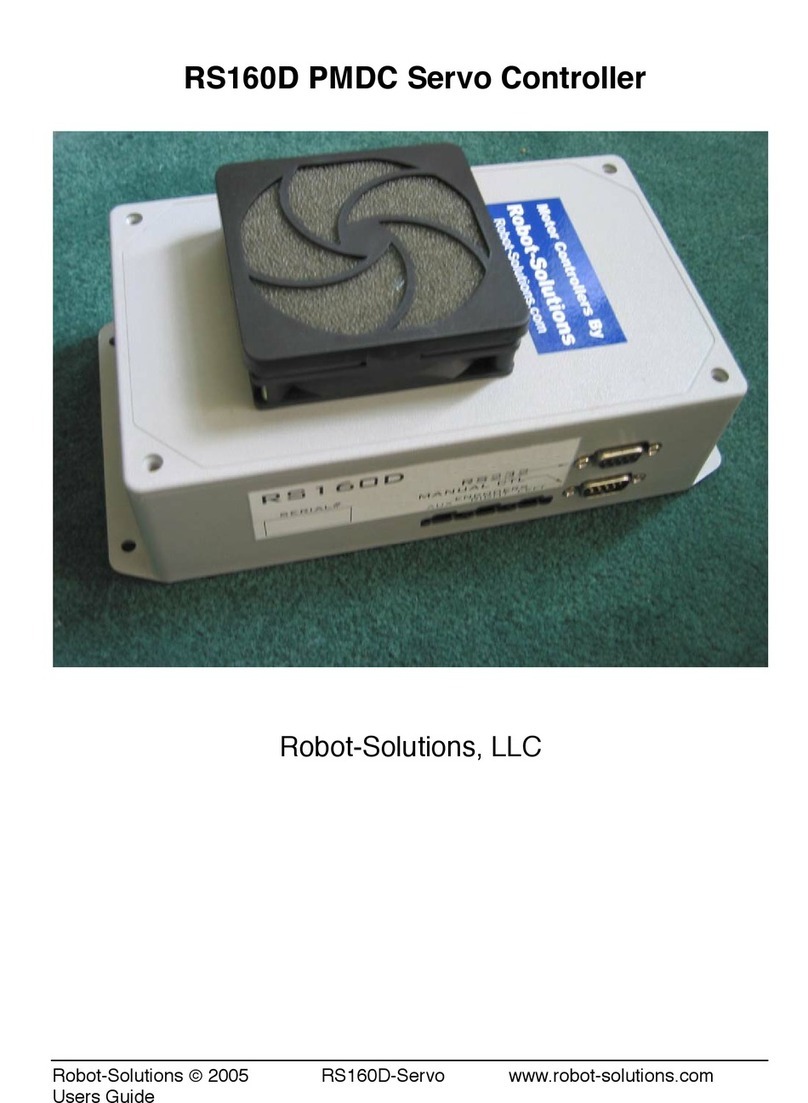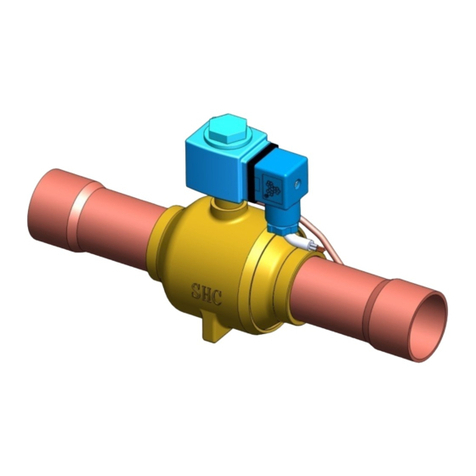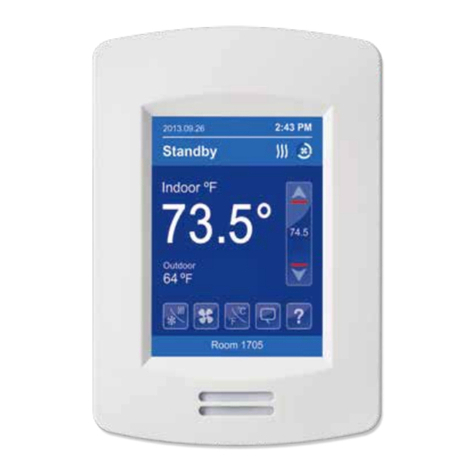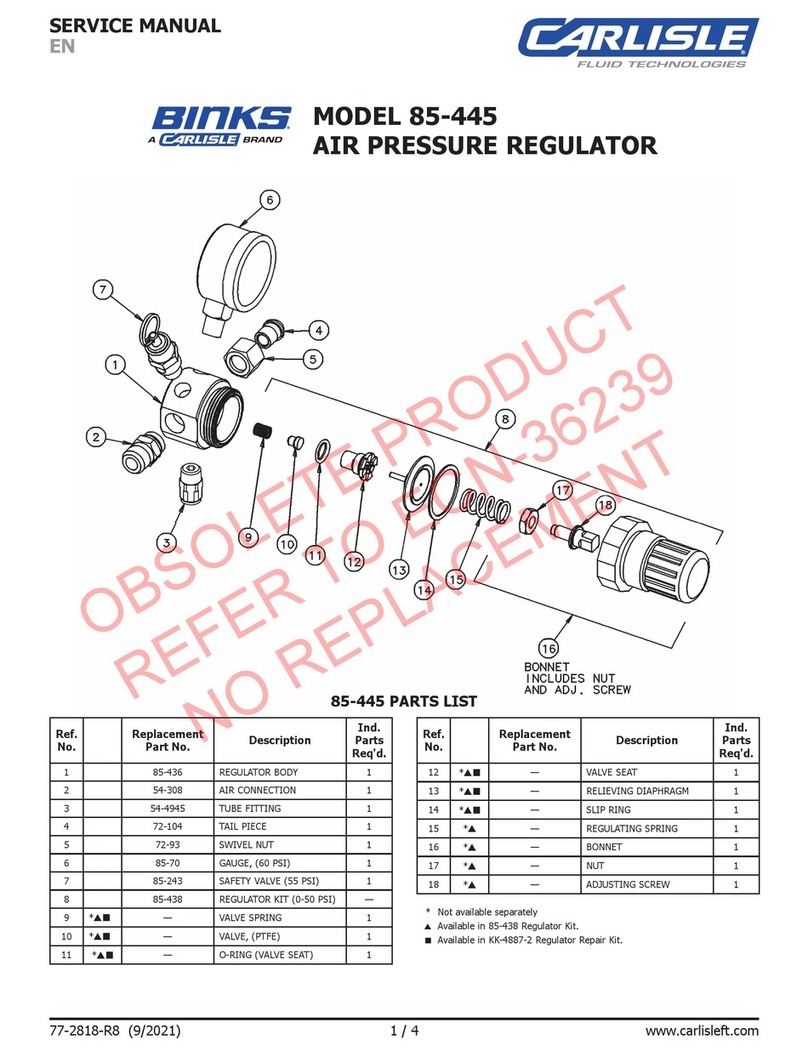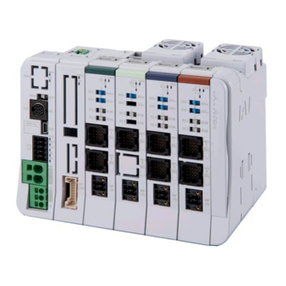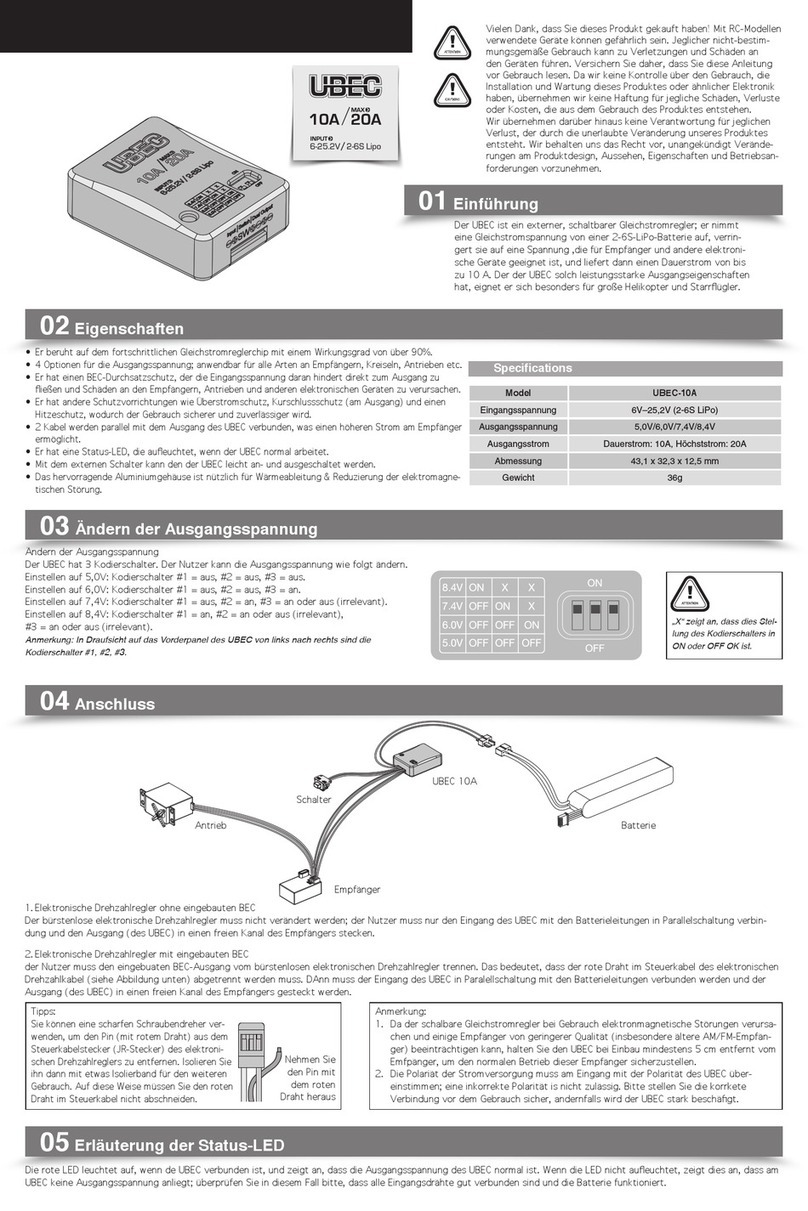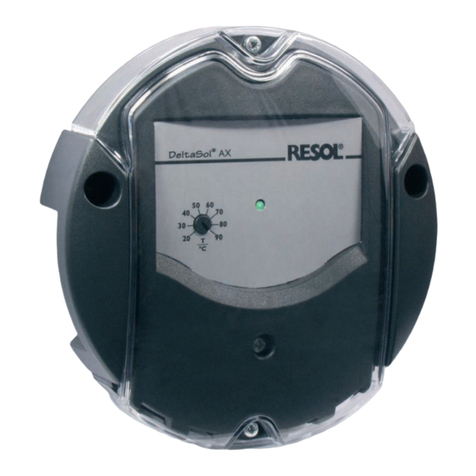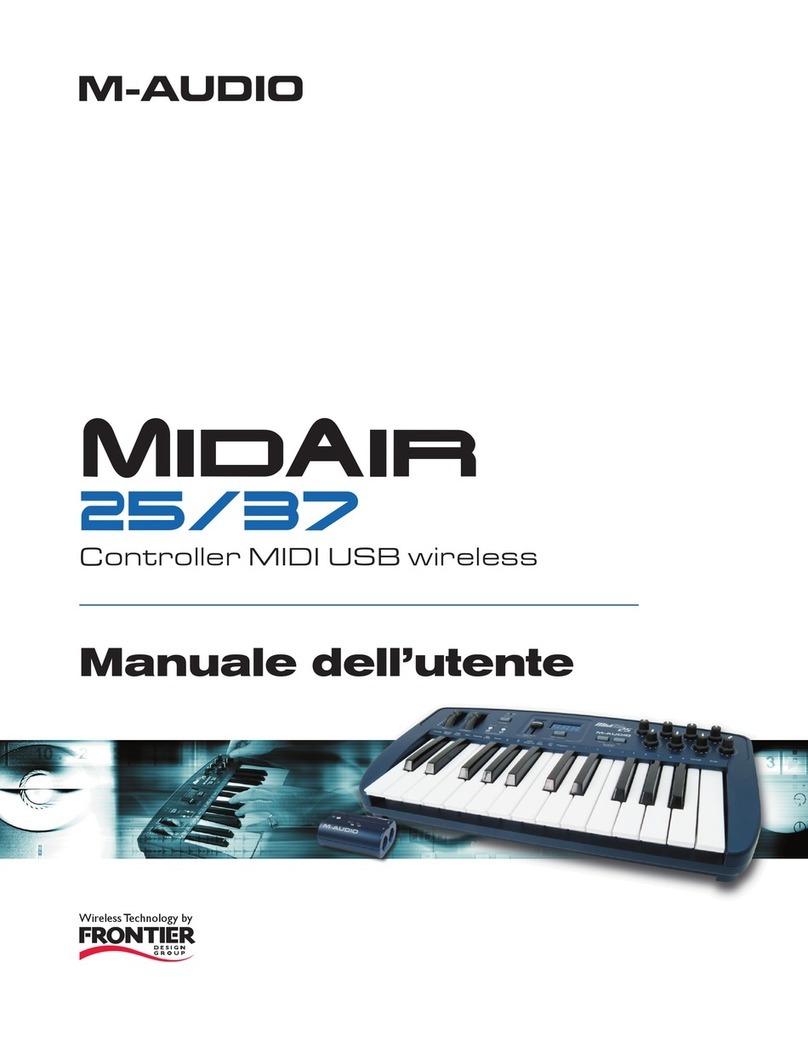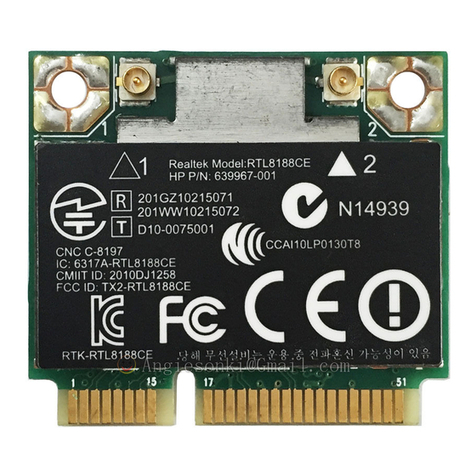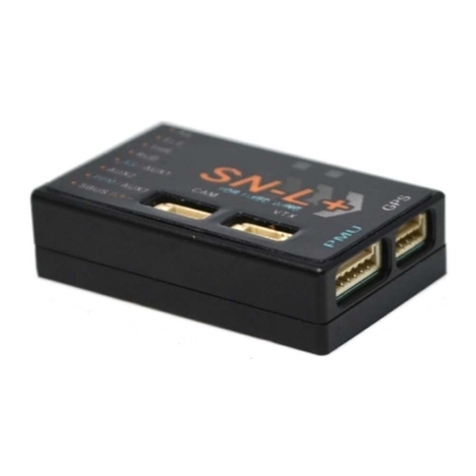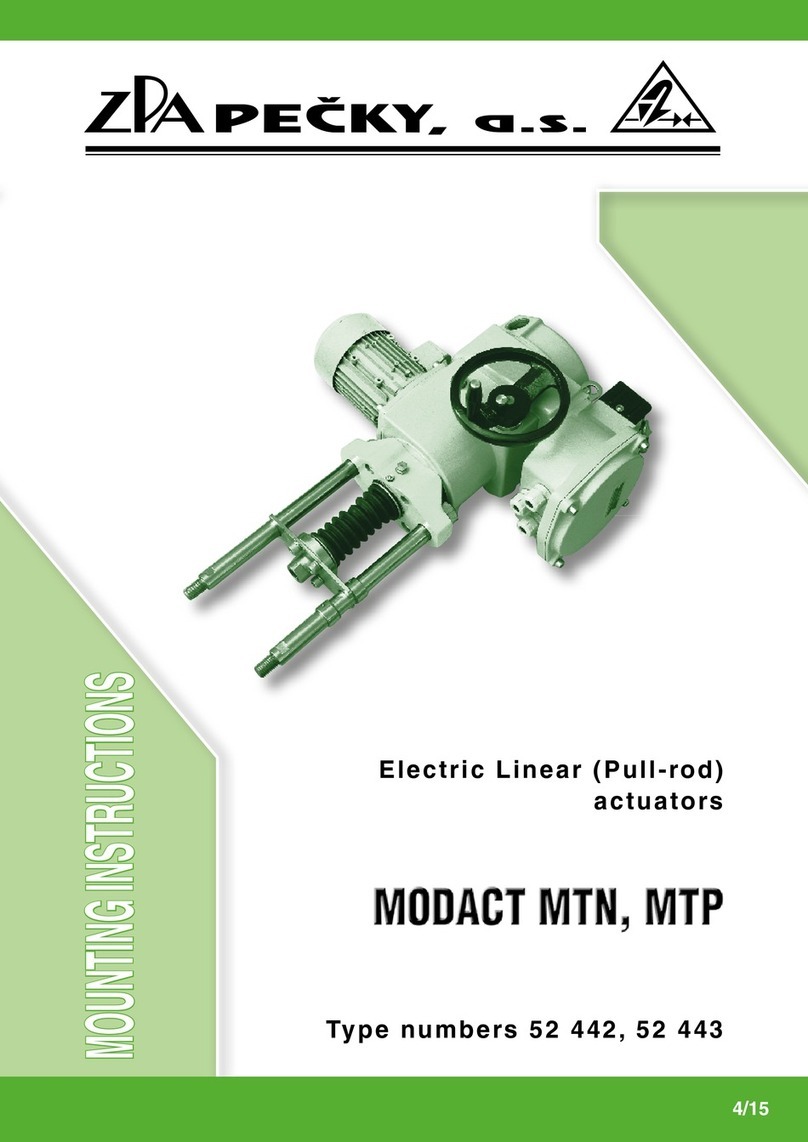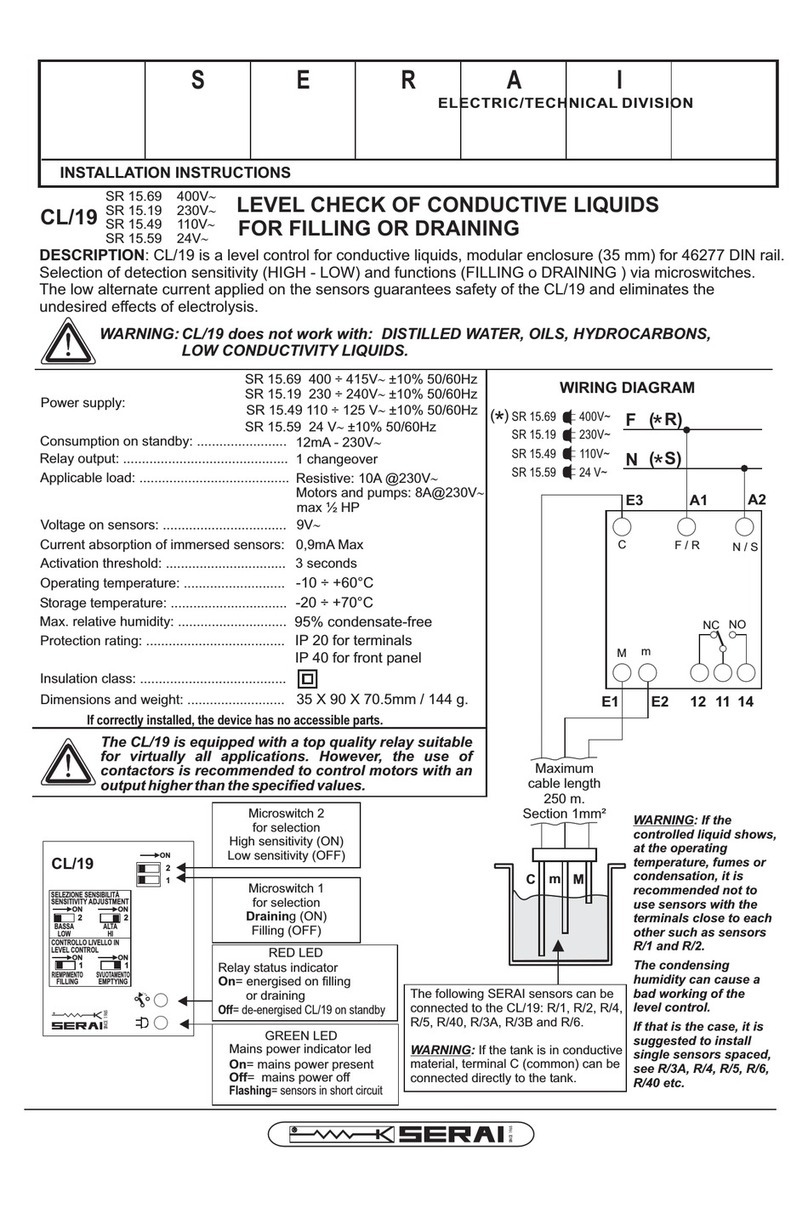HID Mercury LP1501 User manual

HIDMercury™ LP1501 Controller
Installation and Specifications
PLT-05243, A.1
June 2021
HIDMercury™ LP1501 Controller Installation and Specifications
Powering
Trusted Identities

Copyright
© 2020 - 2021 HID Global Corporation/ASSA ABLOY AB. All rights reserved.
This document may not be reproduced, disseminated or republished in any form without the prior written
permission of HID Global Corporation.
Trademarks
HID GLOBAL, HID, the HID Brick logo, the Chain Design, and HIDMercury are trademarks or registered
trademarks of HID Global, ASSA ABLOY AB, or its affiliate(s) in the US and other countries and may not be
used without permission. All other trademarks, service marks, and product or service names are trademarks
or registered trademarks of their respective owners.
Contacts
HID Global Technical Support: www.hidglobal.com/support.
Americas and Corporate Asia Pacific
611 Center Ridge Drive
Austin, TX 78753
USA
Phone: +1866 607 7339
19/F 625 King’s Road
North Point, Island East
Hong Kong
Phone: +852 3160 9833
Europe, Middle East, and Africa (EMEA) Brazil
3 Cae Gwyrdd
Green Meadow Springs
Cardiff CF15 7AB
United Kingdom
Phone: +44 (0) 1440 711 822
Condomínio Business Center
Av. Ermano Marchetti, 1435
Galpão A2 - CEP 05038-001
Lapa - São Paulo / SP Brazil
Phone: +55 11 5514-7100
For additional offices around the world, see www.hidglobal.com/contact/corporate-offices.
What's new
Date Description Revision
June 2021 Minor updates. A.1
A complete list of revisions is available in Revision history.
PLT-05243, A.1 2 June 2021
Powering
Trusted Identities HIDMercury™ LP1501 Controller
Installation and Specifications

Section 01
Powering
Trusted Identities
Overview

1.1 LP1501 controller with paired interface for one physical barrier
The LP1501 intelligent controller provides decision making, event reporting, and database storage for the
HIDMercury hardware platform. Two reader interfaces configured as paired, or alternate readers provide
control for one physical barrier.
Host communication is via the on-board 10-BaseT/100Base-TX Ethernet port.
For UL compliance, the Power Sourcing Equipment (PSE) such as a PoE or PoE+ enabled network switch
and/or PoE or PoE+ power injectors must be UL Listed under UL294B.
Reader port 1 (TB2) can accommodate a reader that uses TTL (D1/D0, Clock/Data), F/2F, or 2-wire RS-485
device signaling (for example an OSDP reader). Reader port 1 also provides tri-state LED control and buzzer
control (one wire LED mode only). This port can also use multiple 2-wire RS-485 multi-dropped devices, such
as up to two OSDP readers, or up to eight remote serial I/O devices.
Reader port 2 (TB3 and TB4) can accommodate a reader that uses TTL (D1/D0, Clock/Data), or F/2F
signaling. Reader port 2 also provides tri-state LED control, and buzzer control (one wire LED mode only).
Two Form-C contact relay outputs can be used for door strike control or alarm signaling. The relay contacts
are rated at 2 A @ 30VDC, dry contact configuration. Two inputs are provided that can be used for
monitoring the door contact, exit push button, or alarm contact. Input circuits can be configured as
unsupervised or supervised.
The LP1501 requires Power over Ethernet (PoE or PoE+) or 12VDC for power. The LP1501 can be mounted in
a 3-gang switch box; a mounting plate is supplied with the unit, or the LP1501 can be mounted in an
enclosure; the supplied mounting plate has mounting holes that match the MR50 mounting footprint.
1.2 LP1501 hardware
PLT-05243, A.1 4 June 2021
Powering
Trusted Identities HIDMercury™ LP1501 Controller
Installation and Specifications

Section 02
Powering
Trusted Identities
LP1501 wiring and setup

2.1 LP1501 connections
TB1-1 IN1 Input 1
TB1-2 IN1
TB1-3 IN2 Input 2
TB1-4 IN2
TB2-1 VO Reader 1 power output – 12 V DC
TB2-2 LED Reader 1 LED output
TB2-3 BZR Reader 1 buzzer output
TB2-4 CLK Reader 1 CLK/Data 1/TR+ (B)1
TB2-5 DAT Reader 1 DAT/Data 0/TR- (A)1
TB2-6 GND Reader 1 ground
TB3-1 LED Reader 2 LED output
TB3-2 BZR Reader 2 buzzer output
TB3-3 CLK Reader 2 CLK/Data 1 input
TB3-4 DAT Reader 2 DAT/Data 0 input
TB4-1 VO Auxiliary power output – 12 V DC
TB4-2 GND Auxiliary power output ground
TB4-3 VIN Input power – 12 V DC (from local power supply)
TB4-4 GND Input power ground
TB5-1 NO Relay K1 – Normally open contact
TB5-2 1-C Relay K1 – Common contact
TB5-3 NC Relay K1 – Normally closed contact
TB5-4 NO Relay K2 – Normally open contact
TB5-5 2-C Relay K2 – Common contact
TB5-6 NC Relay K2 – Normally closed contact
1. Terms (A) and (B) are from the RS-485 standard.
PLT-05243, A.1 6 June 2021
Powering
Trusted Identities HIDMercury™ LP1501 Controller
Installation and Specifications

2.2 Jumpers
Jumpers Set at Description
J1 N/A Factory use only
J3 PoE LP1501 powered from the Ethernet connection
12V LP1501 powered from a local 12 V DC power source connected to TB4-3 (VIN), TB4-4 (GND)
J4 N/A Factory use only
J5 N/A Micro USB port (2.0)
J6 N/A 10-Base-T/100Base-TX Ethernet connection
J7 Cabinet tamper switch input: short = tamper secure
J8 N/A microSD card
2.3 DIP switches
The four switches on the S1 DIP switch configure the operating mode of the LP1501 processor. DIP switches
are read on power-up except where noted.
1 2 3 4 Definitions
OFF OFF OFF OFF Normal operating mode.
ON X X X After initialization, enable default User Name (admin) and Password (password). The
switch is read on the fly, a re-boot is not required. See 2.13 IT security for additional
information.
OFF ON X OFF Use factory default communication parameters.
ON ON X OFF Use OEM default communication parameters. Contact system manufacture for details.
See 2.5 Bulk erase configuration memory.
ON ON OFF OFF Bulk erase prompt mode at power up. See 2.5 Bulk erase configuration memory.
X X X ON Makes the LP1501 report and function like an EP1501. To be used in situations where the
host software has not been updated to support the LP series product line.
Note: All other switch settings are unassigned and reserved for future use. X = don’t care.
2.4 Factory default communication parameters
Interface 1 (NIC1)
Network: static IP address 192.168.0.251
Subnet mask 255.255.0.0
Default gateway 192.168.0.1
DNS server 192.168.0.1
Primary host port IP server, Data security: TLS if Available, port 3001, communication address: 0
Alternate host port Disabled
PLT-05243, A.1 7 June 2021
Powering
Trusted Identities HIDMercury™ LP1501 Controller
Installation and Specifications

2.5 Bulk erase configuration memory
The bulk erase function can be used for the following:
nErase all configuration and cardholder database (sanitize board, less third party applications).
nUpdate OEM default parameters after OEM code has been changed.
nRecover from database corruption causing the board to continuously reboot.
Note: If clearing the memory does not correct the initialization problem, contact Tech Support
2.5.1 Bulk erase steps
1. Set S1 DIP switches 1 and 2 to ON, and 3 and 4 to OFF.
2. Apply power to the board. LED 1 is on for about 15 seconds while boots up.
3. Change DIP switches 1 or 2 to OFF Within 10 seconds after LEDs 1 and 2, and LEDs 3 and 4 start flashing
alternately at a rate of 0.5 seconds. If these switches are not changed, the board will power up using
the OEM default communication parameters.
4. LED 2 will flash indicating that the configuration memory is being erased. Full memory erase takes up to
60 seconds.
5. When complete, only LEDs 1 and 4 will flash for about three seconds.
6. The board will complete its initialization within two seconds after LEDs 1 and 4 stop flashing.
Caution: Do not remove power during the bulk erase process.
2.6 Input power
The LP1501 is powered by one of the following two ways (jumper selected, J3):
nPower is supplied via the Ethernet connection using PoE or PoE+
nLocal 12 V DC power supply, TB4-3 (VIN), TB4-4 (GND)
PLT-05243, A.1 8 June 2021
Powering
Trusted Identities HIDMercury™ LP1501 Controller
Installation and Specifications

2.7 Reader/serial I/O device wiring
Reader port 1 supports TTL (D1/D0, Clock/Data), F/2F, or 2-wire RS-485 device(s). Reader port 2 supports
TTL (D1/D0, Clock/Data), or F/2F. Power to reader port 1 is 12 V DC at 300 mA maximum. The reader
connected to reader port 2 may be powered from the 12 V DC auxiliary power supply output; TB4-1 and TB4-
2. Readers that require different voltage or have high current requirements should be powered separately.
Refer to the reader manufacture specifications for cabling requirements. In the 2-wire LED mode the buzzer
output is used to drive the second LED. Reader port configuration is set via the host software.
Reader port 1 can support up to eight 2-wire RS-485 remote serial I/O devices using MSP1 protocol, or up to
two OSDP devices. If two OSDP devices are used, reader port 2 will not support a third reader. If only one
OSDP device is configured, then reader port 2 is available for a second reader. The maximum cable length is
2000 feet. (610 m). Do not terminate any RS-485 devices connected to reader port 1.
Note: For OSDP cable lengths greater than 200 ft (61 m) or EMF interference, install 120Ω +/- 2Ω resistor
across RS-485 termination ends.
Note: Data 0 and Data 1 wires for Wiegand may be reused for OSDP. However, standard Wiegand cable may
not meet RS-485 twisted pair recommendations. The reuse of cable works best on shorter cable
lengths at lower data rates.
Caution: When powering remote device(s) from the LP1501, do not exceed the maximum current limit. Cable
gauge must also be evaluated. See Specifications for details.
PLT-05243, A.1 9 June 2021
Powering
Trusted Identities HIDMercury™ LP1501 Controller
Installation and Specifications

2.7.1 Reader wiring diagrams
Reader port 1, typical reader 1
(OSDP installation)
Reader port 1, typical reader 1
(Wiegand or Clock/Data installation)
Reader port 2, typical reader 1
(Wiegand or Clock/Data installation)
Reader port 1, typical reader 1
(OSDP installation)
Reader port 1, typical reader 2
(Wiegand or Clock/Data installation)
Reader port 2, typical reader 2
(Wiegand or Clock/Data installation)
PLT-05243, A.1 10 June 2021
Powering
Trusted Identities HIDMercury™ LP1501 Controller
Installation and Specifications

Reader port 1
Typical unsupervised F/2F reader
Reader port 2
Typical unsupervised F/2F reader
Reader port 1
Typical supervised F/2F reader
Reader port 2
Typical supervised F/2F reader
Jumper D1 and LED on supervised F/2F readers
*Inputs on supervised F/2F readers may be unsupervised or supervised (supervised shown).
PLT-05243, A.1 11 June 2021
Powering
Trusted Identities HIDMercury™ LP1501 Controller
Installation and Specifications

Reader port 1 - remote serial I/O devices using MSP1 protocol (2-wire RS485)
Refer to the appropriate remote serial I/O device installation manual for address and baud rate settings. Do
not terminate any of the devices on the RS-485 multi-drop communication bus. Each remote serial I/O device
must be configured with a unique communication address. A maximum of eight remote serial I/O devices can
be connected to reader port 1. Cable shield: only ground one end.
Reader port 1 - OSDP protocol devices (2-wire RS-485)
Refer to the appropriate OSDP device installation manual for address and baud rate settings. Do not
terminate any of the devices on the RS-485 multi-drop communication bus. Each OSDP device must be
configured with a unique communication address. A maximum of two OSDP devices can be connected to
reader port 1. Cable shield: only ground one end.
PLT-05243, A.1 12 June 2021
Powering
Trusted Identities HIDMercury™ LP1501 Controller
Installation and Specifications

2.8 Communication wiring
The LP1501 controller communicates to the host via the on-board 10-BaseT/100Base-TX Ethernet interface.
2.9 Input circuit wiring
Typically, these inputs are used to monitor door position, request to exit, or alarm contacts. Input circuits can
be configured as unsupervised or supervised. When unsupervised, reporting consists of only the open or
closed states.
When configured as supervised, the input circuit will report not only open and closed, but also open circuit,
shorted, grounded*, and foreign voltage*. A supervised input circuit requires two resistors are added to the
circuit to facilitate proper reporting. The standard supervised circuit requires 1kΩ, 1% resistors and should be
located as close to the sensor as possible. Custom end of line (EOL) resistances may be configured via the
host software.
*Grounded and foreign voltage states are not a requirement of UL 294 and therefore not verified by UL.
The input circuit wiring configurations shown are supported but may not be typical:
PLT-05243, A.1 13 June 2021
Powering
Trusted Identities HIDMercury™ LP1501 Controller
Installation and Specifications

2.10 Relay circuit wiring
Two Form-C contact relays are provided for controlling door lock mechanisms or alarm signaling devices.
The relay contacts are rated at 2 A @ 30VDC, dry contact configuration. Each relay has a Common pole (C),
a Normally Open pole (NO) and a Normally Closed pole (NC). When you are controlling the delivery of power
to the door strike, the Normally Open and Common poles are used. When momentarily removing power to
unlock the door, as with a mag lock, the Normally Closed and Common poles are used. Check with local
building codes for proper egress door installation.
Door lock mechanisms can generate EMF feedback to the relay circuit that can cause damage and premature
failure of the relay and affect the operation of the LP1501. It is recommended that either a diode or MOV
(metal oxide varistor) is used to protect the relay. Wire should be of sufficient gauge to avoid voltage loss.
From the Auxiliary output, the LP1501 can provide 12 V DC power for external devices, provided that the
maximum current is not exceeded. See Specifications for details. If a local power supply is used, it must be UL
Listed Class 2 rated.
Diode selection
nDiode current rating: 1x strike current.
nDiode breakdown voltage: 4x strike voltage.
nFor 12 V DC or 24 VDC strike, diode 1N4002 (100V/1A) typical.
2.11 Memory backup battery
The SRAM is backed up by a rechargeable battery when input power is removed. This battery should retain
the data for a minimum of three days. If data in the SRAM is determined to be corrupt after power up, all data,
including flash memory, is considered invalid and is erased. All configuration data must be re-downloaded.
Note: The initial charge of the battery may take up to 48 hours to be fully charged.
PLT-05243, A.1 14 June 2021
Powering
Trusted Identities HIDMercury™ LP1501 Controller
Installation and Specifications

2.12 Status LEDs
2.12.1 Power-up
All LEDs are OFF.
2.12.2 Initialization
After power is applied, LED 1 is ON for about 15 seconds, then LEDs 2 through 7 are flashed once at the
beginning of initialization. LEDs 5, 6 and 7 are turned ON for approximately one second after the hardware
initialization has completed, then the application code is initialized. The amount of time the application takes
to initialize depends on the size of the database, about one second without a card database. Each 10,000
cards will add about two seconds to the application initialization. When LEDs 1 through 4 flash at the same
time, data is being read from or written to flash memory, do not cycle power when in this state. If the
sequence stops or repeats, perform the bulk erase procedure, See 2.5 Bulk erase configuration memory. If
clearing the memory does not correct the initialization problem, contact Tech Support
2.12.3 Running
After initialization is complete, the LEDs have the following meanings:
LED Description
1Off-Line / On-Line: Off-Line = 20% ON, On-Line = 80% ON
2Host communication activity
3Readers (combined):
Clock/Data or D1/D0 Mode = Flashes when data is received, either Input.
RS-485 Mode = Flashes when transmitting data
F/2F Mode = Flashes when data/acknowledgment is received
4Input IN1 Status: OFF = Inactive, ON = Active, Flash = Fault1
5Input IN2 Status: OFF = Inactive, ON = Active, Flash = Fault1
6Cabinet tamper
7Reserved for future use
D9 Relay K1: ON = Energized
D10 Relay K2: ON = Energized
YEL Ethernet Speed: OFF = 10 Mb/S, ON = 100 Mb/S
GRN OFF = No link, ON = Good link, Flashing = Ethernet activity
1. If this input is defined, every three seconds the LED is pulsed to its opposite state for 0.1 seconds, otherwise, the LED is off.
PLT-05243, A.1 15 June 2021
Powering
Trusted Identities HIDMercury™ LP1501 Controller
Installation and Specifications

2.13 IT security
Ensure that the LP1501 is installed securely. Create user accounts to the web configuration page using secure
passwords.
Ensure all DIP switches are to be in the OFF position for the normal operating mode.
The LP1501 is shipped from the factory with a default login account, which is enabled when DIP 1 is moved
from OFF to ON (See 2.3 DIP switches). The default login user name (admin) and password (password) will
be available for five minutes once the DIP switch is toggled. It is therefore important that at least one user
account is defined, and the DIP switches are set to OFF before the LP1501 is commissioned.
Configuring the LP1501 with an IP address that is accessible from the public is not recommended.
The following options are available for enhanced network security:
nDisable SNMP.
nZeroconf discovery.
nThe web configuration module.
nEnable data encryption over the host communication port.
PLT-05243, A.1 16 June 2021
Powering
Trusted Identities HIDMercury™ LP1501 Controller
Installation and Specifications

Section 03
Powering
Trusted Identities
Specifications

The interface is for use in low voltage, Class 2 circuits only.
The installation of this device must comply with all local fire and electrical codes.
Primary power PoE (12.95 W), compliant to IEEE 802.3af
or
PoE+ (25 W), compliant to IEEE 802.3at
or
12 V DC ±10%, 1.8 A maximum
Power output PoE: 12 V DC @ 625 mA including reader and auxiliary power output1
Power output PoE+ or external 12 V DC: 12 V DC @ 1.25 A including reader and auxiliary power output1
Micro USB port 5 V DC maximum (deduct 270 mA from reader and auxiliary power output)
1. Excluding micro USB port
Caution: PoE power is to be supplied by a Listed ITE or Access Control System Unit (ALVY), power limited,
PoE+ injector or PoE+ Ethernet switch providing 42.5 – 57 VDC, 25.5 W for maximum output.
SRAM backup battery Rechargeable battery
microSD card Format: microSD or microSDHC; 2GB to 8GB.
Host communication Ethernet: 10-BaseT/100Base-TX and Micro-USB port (2.0) with optional adapter:
pluggable model USB2-OTGE100
Inputs Two unsupervised/supervised, programmable end of line resistors, 1k/1kΩ, 1%, ¼ watt
standard
One unsupervised input dedicated for cabinet tamper
Outputs Two relays: Form-C contacts: 2 A @ 30 V DC, resistive
Reader interface
Power 12 V DC ± 10%: PoE, PoE+ or local power supply, 300 mA maximum
Data inputs Reader port 1: TTL compatible, F/2F or 2-wire RS-485
Reader port 2: TTL compatible or F/2F
LED output TTL compatible, high > 3 V, low < 0.5 V, 5 mA source/sink maximum
Buzzer output Open collector, 12 V DC open circuit maximum, 40 mA sink maximum
Cable requirements
Power 1 twisted pair, 18 AWG (when using local 12 V DC power supply)
Ethernet CAT-5, minimum
Reader data (TTL) 6-conductor, 18 AWG, 500 feet (152 m) maximum
Reader data (F/2F) 4-conductor, 18 AWG, 500 feet (152 m) maximum
Reader data (RS-485) 1 twisted pair, shielded. 24 AWG, 120Ω impedance, 2000 feet (610 m) maximum
Alarm input 1 twisted pair per input, 30Ω maximum
Outputs As required for the load
PLT-05243, A.1 18 June 2021
Powering
Trusted Identities HIDMercury™ LP1501 Controller
Installation and Specifications

Environmental
Storage temperature -55 to +85°C
Operating temperature 0 to +70°C
Humidity 5 to 95% RHNC
Mechanical
Dimensions without
bracket
5.5 inches (140 mm) W x 2.75 inches (70 mm) L x 0.96 inches (24 mm) H
Dimensions with bracket 5.5 inches (140 mm) W x 3.63 inches (92 mm) L x 1.33 inches (34 mm) H
Weight without bracket 3.6 oz. (103 g)
Weight with bracket 4.43 oz. (125.5 g)
UL294, 6th edition Performance Levels
Feature Level
Standby Power I
Endurance IV
Line Security I
Destructive Attack I
These specifications are subject to change without notice.
3.1 Warranty
Mercury Security warrants the product is free from defects in material and workmanship under normal use
and service with proper maintenance for one year from the date of factory shipment. Mercury Security
assumes no responsibility for products damaged by improper handling or installation. This warranty is limited
to the repair or replacement of the defective unit.
There are no expressed warranties other than set forth herein. Mercury Security does not make, nor intends,
nor does it authorize any agent or representative to make any other warranties, or implied warranties, and
expressly excludes and disclaims all implied warranties of merchantability or fitness for a particular purpose.
Returns must be accompanied by a Return Material Authorization (RMA) number obtained from customer
service, and prepaid postage and insurance.
3.2 Liability
The Interface should only be used to control exits from areas where an alternative method for exit is
available. This product is not intended for, nor is rated for operation in life-critical control applications.
Mercury Security is not liable under any circumstances for loss or damage caused by or partially caused by
the misapplication or malfunction of the product. Mercury Security’s liability does not extend beyond the
purchase price of the product.
PLT-05243, A.1 19 June 2021
Powering
Trusted Identities HIDMercury™ LP1501 Controller
Installation and Specifications

3.3 Regulatory
This device complies with part 15 of the FCC Rules. Operation is subject to the following two conditions: (1)
This device may not cause harmful interference, and (2) this device must accept any interference received,
including interference that may cause undesired operation.
PLT-05243, A.1 20 June 2021
Powering
Trusted Identities HIDMercury™ LP1501 Controller
Installation and Specifications
Table of contents
Other HID Controllers manuals
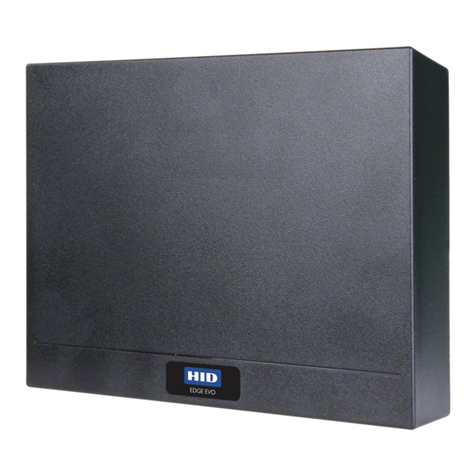
HID
HID EDGE EVO EH400-K User manual
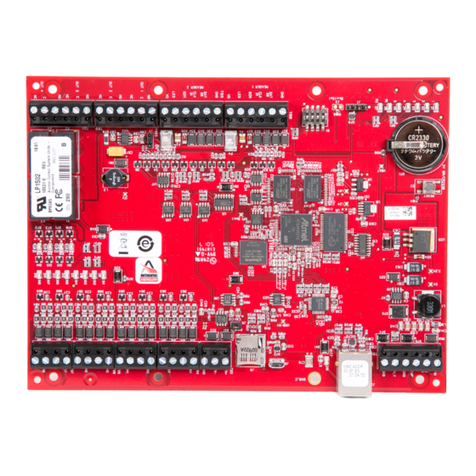
HID
HID Mercury LP1502 User manual
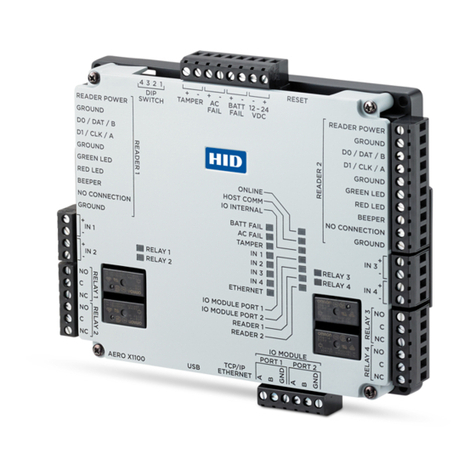
HID
HID Aero X1100 User manual
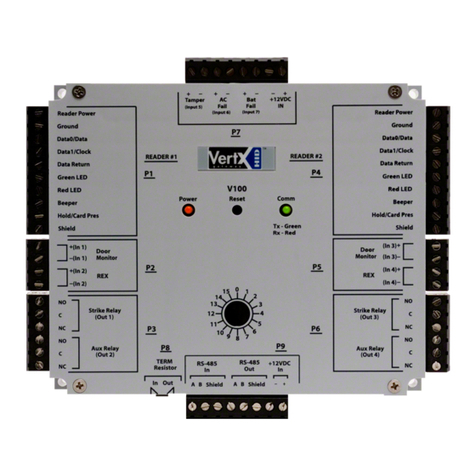
HID
HID VertX EVO Series User manual
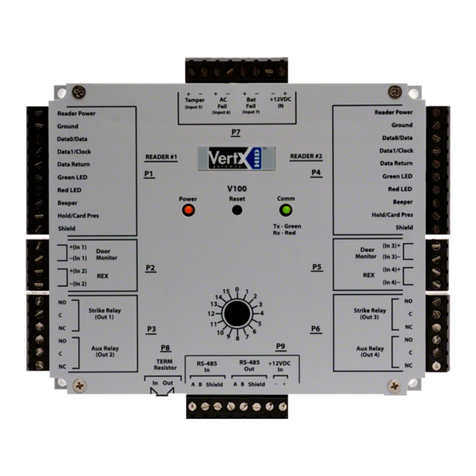
HID
HID Vertx CS V100 User manual
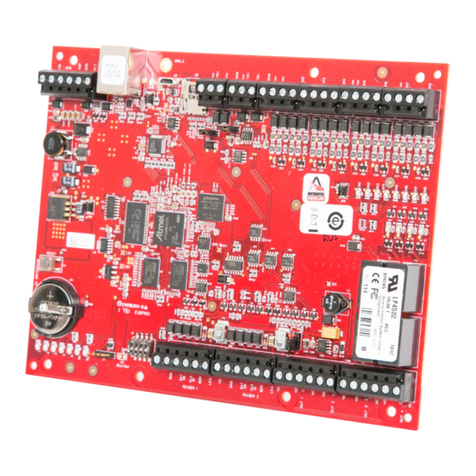
HID
HID Mercury LP4502 User manual
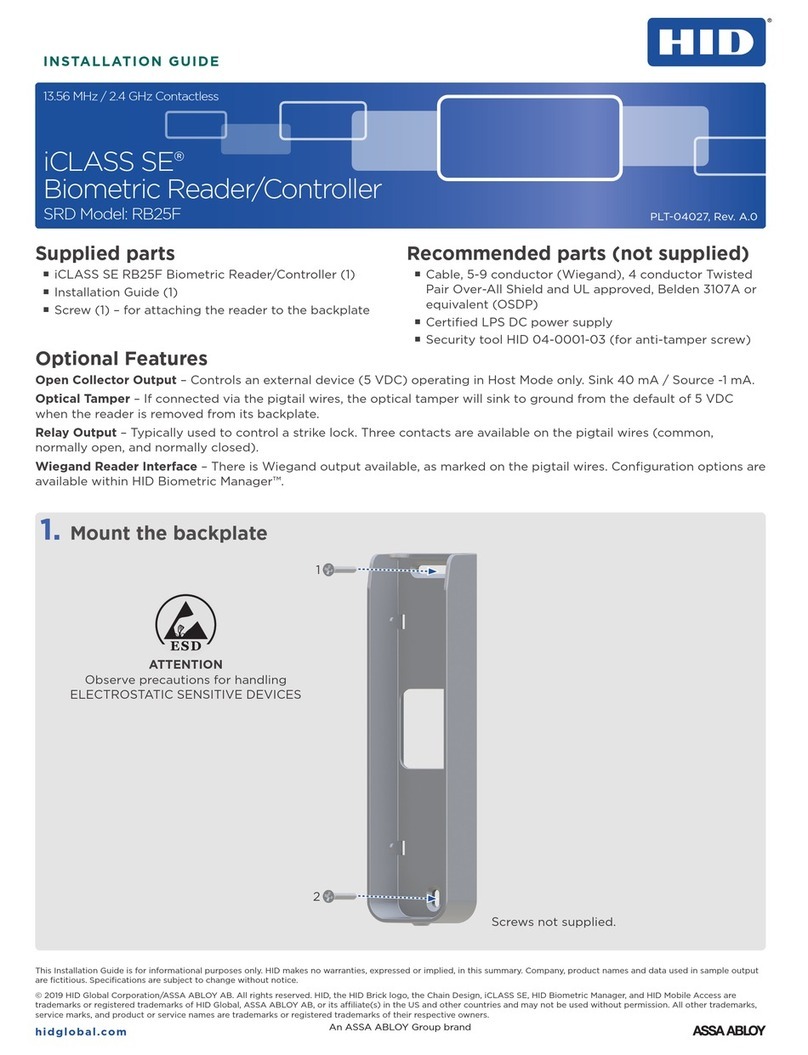
HID
HID iCLASS SE RB25F User manual
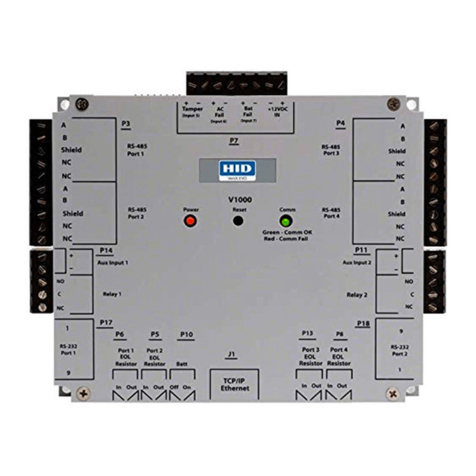
HID
HID VertX EVO V1000 User manual
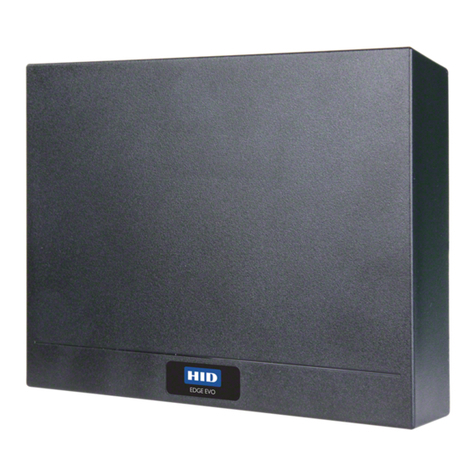
HID
HID EDGE EVO EH400 User manual
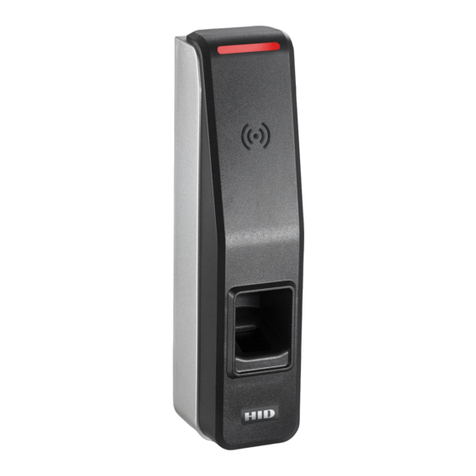
HID
HID Signo 25B User manual
